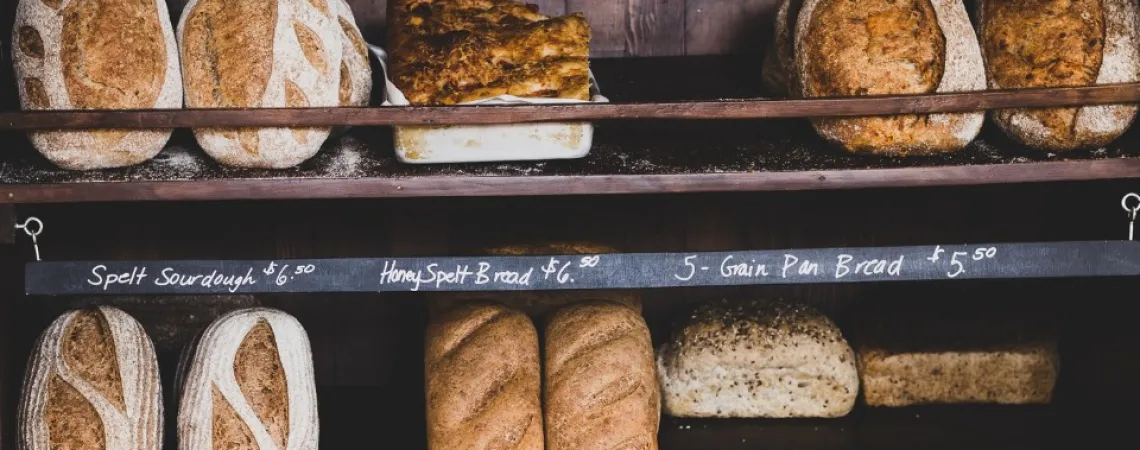
For individuals with celiac disease, seeking guidance from a nutritionist can be crucial in managing the condition effectively while enhancing their overall quality of life. This article delves into the reasons why professional nutritional support is necessary, including optimizing screening tests, ensuring adherence to a gluten-free diet, improving nutritional quality, and preventing dietary deficiencies.
1. Ensuring Sufficient Gluten Consumption Before Screening
The literature is still uncertain regarding the exact protocol to decrease false negatives while maintaining a good quality of life for patients. Premature removal of gluten from the diet can result in a false negative due to the normalization of antibody levels (anti-transglutaminase or anti-tTG) caused by the decrease in inflammatory status resulting from gluten withdrawal. Although consuming 10g of gluten per day for 4 to 8 weeks has long been recommended (1), a recent study reports that ingesting 2 to 3g of gluten (equivalent to 1 to 2 slices of bread) per day for 2 weeks is sufficient to induce changes in the intestinal mucosa (2). Consuming 2 slices of bread per day for 6 to 8 weeks before screening tests is thus a reasonable approach, as recommended by Celiac Quebec (3). If this quantity causes too much discomfort for your patient, consuming half a slice of bread per day for 3 months may be suggested, as recommended by the Celiac Disease Center at the University of Chicago (4).
A nutritionist can guide your patient through the best approach to reintroduce gluten before a screening test to avoid false negatives and delay medical intervention.
2. Ensuring Adherence to the Gluten-Free Diet
According to a Canadian study, 50% of patients with celiac disease struggle to recognize gluten-containing foods (5). Considering that strict elimination of gluten from the diet is the only available treatment for celiac disease (1), it is crucial to have a good understanding of these foods. Moreover, many individuals struggle with reading nutrition labels, eating out, or making appropriate choices at restaurants (5), which can lead to poor adherence to the diet, as well as frustration and anxiety.
A nutritionist can help your patient identify foods to avoid, teach methods of preparing gluten-free grains (such as millet, quinoa, or buckwheat), and guide them towards nutritionally valuable gluten-free products. They can also teach them how to create a safe kitchen environment to prevent cross-contamination and provide guidance on finding safe restaurants that can offer gluten-free meals, ensuring a comfortable lifestyle.
3. Optimizing Nutritional Quality
Gluten-free products are generally higher in fat and salt and lower in protein and fiber (6). This can lead to a higher fat intake and lower fiber intake (6,7).
A nutritionist can help your patients optimize nutritional quality by finding suitable substitutes for wheat products and gluten-free recipes, which can reduce fatigue and improve overall health.
4. Preventing Nutritional Deficiencies
The inflammatory state associated with celiac disease, combined with the lack of dietary diversity resulting from a restrictive gluten-free diet, can lead to nutritional deficiencies (8), including:
- Iron: Iron-deficiency anemia affects up to 46% of individuals with celiac disease (9). It can develop even with adequate iron intake due to malabsorption.
- Calcium and Vitamin D: Concomitant lactose intolerance is common (10), putting celiac patients at risk of osteoporosis, osteopenia, and bone fractures (11).
- Folate and Vitamin B12: Caused by malabsorption related to the inflammatory state during poor disease control and/or inadequate intake (12).
- Fiber (6): If there is a limited intake of whole grains, vegetables, fruits, legumes, nuts, and seeds.
- Magnesium (8): Almost 20% of untreated celiac patients may have a deficiency in this mineral (13). This is partly due to the low concentration of magnesium in gluten-free cereals (13).
A nutritionist can help your patients identify and address nutritional deficiencies and provide guidance on supplementation when necessary.
For all these reasons, a nutritionist from TeamNutrition is an invaluable ally in ensuring proper disease control while promoting a good quality of life, always with a focus on enjoyment.
References:
Rubio-Tapia A, Hill ID, Kelly CP et al. ACG clinical guidelines: diagnosis and management of celiac disease. Am J Gastroenterol. 2013 May;108(5):656-76.Leffler D, Schuppa D, Pallav K et al. Kinetics of the histological, serological and symptomatic responses to gluten challenge in adults with coeliac disease. Gut 2012, 62, 996–1004.Ceoliaque Québec. [Online] Boucherville (CA): Diagnostic; [cited November 13, 2020]. Available from: https://www.fqmc.org/professionnels-de-la-sante-15University of Chicago Celiac Disease Center. [Online] Chicago (US-IL). What is a gluten challenge?; [cited November 13, 2020]. Available from: http://www.cureceliacdisease.org/ faq/what-is-a-gluten-challenge.Zarkadas M, Dubois S, MacIsaac L et al. Living with coeliac disease and a gluten-free diet: a Canadian perspective. J Hum Nutr Diet. 2013 Feb;26(1):10-23.Miranda J, Lasa A, Bustamante MA et al. Nutritional Differences Between a Gluten-free Diet and a Diet Containing Equivalent Products with Gluten. Plant Foods Hum Nutr. 2014 Jun;69(2):182-7.Mariani P, Viti MG, Montuori M et al. The Gluten-Free Diet: A Nutritional Risk Factor for Adolescents with Celiac Disease? J Pediatr Gastroenterol Nutr 1998 Nov;27(5):519-23.Sheperd SJ et Gibson PR. Nutritional inadequacies of the gluten-free diet in both recently-diagnosed and long-term patients with coeliac disease. J Hum Nutr Diet. 2013 Aug;26(4):349-58.Bottaro G, Cataldo F, Rotolo N, et al. The clinical pattern of subclinical/silent celiac disease: an analysis on 1026 consecutive cases. Am J Gastroenterol. 1999;94:691–696.Bodé et Hoyer. Incidence and clinical significance of lactose malabsorption in adult coeliac disease. Scand J Gastroenterol. 1988 May;23(4):484-8.Vasquez H, Mazure R, Gonzalez D et al. Risk of fractures in celiac disease patients: a cross-sectional, case-control study. Am J Gastroenterol. 2000 Jan;95(1):183-9.Halfdanarson TR, Litzow MR et Murray JA. Hematologic manifestations of celiac disease. Blood. 2007 Jan 15;109(2):412-21.Caruso R, Pallone F, Stasi E et al. Appropriate nutrient supplementation in celiac disease. Ann Med. 2013 Dec;45(8):522-31.






